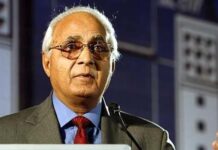A first in the history of India, as reports of diesel cost more than petrol, made an average man cringe, the prices of both petrol and diesel continue to rise unabatedly.
Lockdown restrictions in the country have been lifted, and the economic activities slowly resume yet, the overall market sentiment remains dull.
Ceaseless hikes in the prices of both petrol and diesel in the last few days, continue to jolt ‘The Common Man’.
However, it seems that the current government is oblivious to the fact.
A statement made by Mr. Dharmendra Pradhan, Minister of Petroleum & Natural Gas: –
“The recent increase in petrol and diesel prices have not impacted the common man”, is a clear indication of it.
Grappling with the impact of the COVID – 19 pandemics and its rippling effect on personal income, the common man cannot help but question – the continuous hike in fuel prices.
In India, the two-wheeler is the most common mode of transport, an increase in petrol prices adds up as a significant cost for an average middle -class family.
The fact is, the common man is facing an existential crisis, with employment opportunities dwindling and the probability of job losses imminent, a rise in fuel prices impacts the already limited resources of an average household.
The industrial sector itself on the crossroads and compelled to rethink strategies to combat and endure the current economic conditions, the poor and the middle class find themselves struggling with extreme scenarios leading to a nil chance of an increase in household income.
A steady increase in petrol and diesel prices will surely cast a shadow on the already – burdened people.
Diesel, used primarily in the agricultural sector, with the advent of the sowing season, the farmers have little choice but to accept the increase in costs.
Add to this, the cost of procuring a tractor (mostly hired) and the costs of seeds.
Finding labor is increasingly becoming difficult, owing to labor crises and the subsequent migration of workforce to their respective native places, it is a tough road indeed, for the agricultural sector.
The outlook for the Industrial Sector is not very promising either several factories have capped their production and besieged with the possibility of a complete halt in operations, many workers are on the verge of losing their source of income.
The continuous hike in fuel prices, while the global prices remain stable, raises the question as to the likely cause.
Is it a strategy to recover the shortfall in tax targets?
If yes, are the prices set to increase further in the coming days?
One cannot help but ask – anticipating expenses and with tax relief given, is the hike in fuel prices the only viable solution to recover losses?
An increase in fuel prices is also an indication of a rise in inflation, further aggravating the vicious cycle in play.
India’s economic growth for the year 2020 is pegged at 1.2% as the economic activities slowly resume, an increase in petrol and diesel prices could further increase transportation, manufacturing, and heating costs.
An increase in these costs can in turn lead to an increase in the prices of a variety of goods and services and could lead to pushing the production and service costs on to the consumers.
While increasing fuel prices remain a go-to strategy for the government.
However, the current situation is so unique in its making, that it is nothing short of taming a wild beast!
As the fight of COVID – 19 pandemics rages on, natural calamities such as cyclones, locust attacks, incessant rain in many parts of the country triggering floods, military confrontation on the Indian borders and the economy on the crossroads, this is a lethal concoction, delivering a devastating blow to the already fraught system.
The industrial sector resumes its operations but with an added responsibility, that of providing an adequate and safe work environment for its employees.
Thereby incurring higher costs of production, even as it struggles to minimize job losses and mass salary cuts.
Can the small and medium -scale industries take on the slews and survive?
Will the larger corporations absorb the losses and not pass the same on to the consumers even as their profits dwindle?
Finally, how much resilience can the common man show and what relief can he expect?
The government must take note of the difficulties faced by both the common man and the industrial sector if we are to successfully negotiate the current crises.
It is important that political aspirations, political agendas, and political apathy are put to rest in the current context and national, economic, and the common man’s interest is given the most importance.
















































